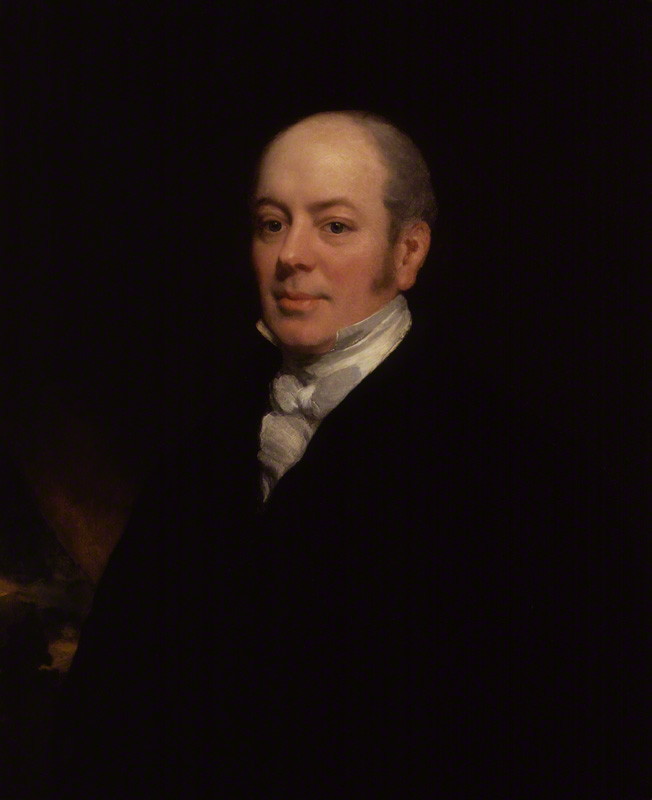Case Study 8: William Buckland by Thomas Phillips 1800-1825
This study discusses the relationships between several portraits of a sitter and illustrates how several pieces of evidence, including the artist’s sitters book, sitter’s correspondence, an engraving after one portrait, portrait length, the artist’s signature and date on a work, the sitter’s dress, an object signifying his occupation, and his apparent age in a portrait, are considered together in establishing a portrait type and the probable sequence in which a group of portraits were painted.
“The portrait of William Buckland, dean of Westminster Abbey and an important geologist, by Thomas Phillips (NPG 1275). The portrait is one of several by Phillips of the same sitter. The first of these is listed in the artist’s sitters book (copy in the NPG archive), under 1830, and was exhibited at the Royal Academy in the same year. It was apparently commissioned by Buckland’s friend and admirer, Beriah Botfield. In a letter to Phillips of 27 April 1831 (NPG archive), Buckland wrote:
‘In reply to his [Botfield’s] first [letter] I told him I shd be glad to see a good Engraving published from the Picture, & stated to Him what had passed on the Subject between Me & Butler & Yourself – that Reply produced his 2d letter written evidently in Ignorance of the Practise of your Profession to receive often large sums of money from Print Sellers or Engravers on account of Engravings of their own Pictures … In Equity I thought it fair that the Painter rather than the Purchaser or Print Seller shd be entitled to a share of the Profits that may arise from the Engravings …
This letter of mine required no reply as it was in Answer to his 2d – & I have heard no more from Him. But I expected he wd ere this have written to You granting his Permission to have the engraving made for he has now my wishes expressed that it shd be engraved by Cozens [sic] in Mezzotint under your Inspection.’
This first portrait was not engraved, presumably because of Botfield’s continuing objections. In May 1831, however, Buckland was sitting for a new portrait, commissioned by himself. He wrote to the artist in a letter of 19 May 1831 (NPG archive):
‘Pray oblige me with a line by the post of tomorrow or Saturday to inform me if you wishe me to bring up for my first & 2d Sitting my old Friend the Hyena’s Head. I take for granted that I must bring my Gown.’
This three-quarter length portrait was finished in 1832 (the signature and date, now obscured, were recorded by George Scharf in the last century), and shows Buckland in his gown standing beside his hyena’s head. It was presented to the Westminster Abbey Deanery, where it still is, by Buckland’s grandson, Harold Bompas; it is listed in the artist’s sitters book under 1832, exhibited Royal Academy in the same year, engraved in mezzotint by Samuel Cousins, published Molteno and Graves, 1833 (example in NPG).
Another version of this type, signed and dated 1836, was sold at Sotheby’s, 4 October 1944 (lot 99), bought D. Minlore. A third unlocated portrait of Buckland by Phillips is listed in the latter’s sitters book under 1842, exhibited at the Royal Academy in the same year.
The NPG portrait is vaguely similar in pose and feature to the Westminster portrait of 1832, but appears to show Buckland as an older man. This would seem to exclude it as being the 1830 Botfield picture. Equally, the 1842 portrait is described by Phillips as a three-quarter length, while the NPG picture is a half-length. The latter has a good provenance going back to Sir Robert Peel (it is listed in his collection as by Phillips as early as 1846), but its date and its exact relationship to the other versions must, in the present state of knowledge, remain speculative.”
RL Ormond, ‘The National Portrait Gallery archive’, Journal of the Society of Archivists, 4 (1970), 130-136)

